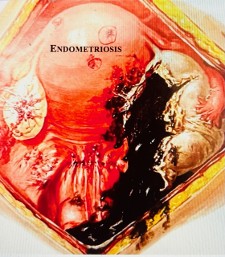| Leonard Weather, Jr., RPh, MD, FAPCR, FFPM is dedicated to making the lives of women better, which is why we offer a wide range of surgical outpatient gynecological procedures. We also offer a variety of medical services for women. |
|
Lapar oscopy (with C02 Laser) oscopy (with C02 Laser)
Laparoscopy allows major procedures to be performed through very small incisions. A small incision is made in the navel in order for a telescope-like instrument (laparoscope) to be placed. The abdomen is filled with gas to allow the surgeon to see the surgical areas on a monitor. A variety of conditions can be diagnosed and treated with laparoscopy. Some of them are endometriosis, ovarian cysts, adhesions, and fibroid tumors. The procedure is performed under general anesthesia in an outpatient surgical center. Most patients are generally able to go back to work in 2 to 3 days.
Myomectomy (with C02 Laser)
Patients with fibroid tumors and symptoms like menorrhagia (heavy periods) pain, pressure, infertility, and may qualify for this procedure. Fibroid tumors are removed from the uterine wall, while allowing the rest of the uterus to remain. The procedure can be performed via laparoscopy or mini-laparotomy in a same-day surgical center. In rare cases, the procedure can be performed via a larger incision (laparotomy), which may require hospitalization for 1 to 2 days. Fibroids inside of the uterine cavity can be removed by hysteroscopy, the placement of a telescope-like instrument (hysteroscope) into the cavity to take out the tumors.
|
|
Ovarian Cystectomy (with C02 Laser) Cystectomy refers to the removal of a cyst (fluid-filled sac found on the ovary), leaving the normal ovarian tissue in place. Some patients with ovarian cysts require surgery to remove the mass itself or the entire ovary. In general, this is reserved for patients with large, persistent growths, or when the growth is causing symptoms. Oophorectomy refers to the removal of the ovary. Ovarian cystectomy is generally performed via laparoscopy in an outpatient surgical setting and the patient can generally return to work in 2 to 3 days.
Hysteroscopy
This procedure is used to diagnosis and treat problems related to the inside of the uterine cavity. The procedure is performed in the office or outpatient surgical center wherein a telescope-like instrument (hysteroscope) is inserted through the vagina and into uterus cavity to diagnosis and treat abnormal growths known as polyps that may cause heavy bleeding, fibroid tumors, scar tissue, and other problems.
Tuboplasty (with C02 Laser)
Tuboplasty is the revision or repair of the fallopian tubes for infertility problems. The procedure is generally performed via laparoscopy to assist with pregnancy in women who have a tubal factor condition related to one of the reasons why she is not able to get pregnant. Fallopian tubes can be damaged or blocked by a number of disorders, such as pelvic inflammatory disease (PID) related to STDs, previous surgery, endometriosis, post-partum infections, or a combination thereof. The laparoscopy treatment involves alleviating adhesions and opening up the ends of the tubes. Occasionally, this procedure may be performed via laparotomy. When performed via laparoscopy or laparotomy, it's done in an outpatient surgical center and the patients can generally return to work in 2 to 3 days.
Tubal Reversal
Tubal sterilization is a very common procedure wherein a portion of the fallopian tube is blocked by burning, tying, cutting and tying, or placement of a ring or band on the tubes. It can be performed right after delivery of a child or via laparoscopy as an outpatient procedure. If the tubes are not badly damaged or destroyed by the sterilization procedure, a tubal reversal may be performed to assist with pregnancy.
Patients who desire tubal reversal should obtain their operative note from the sterilization surgery and the pathology report if available. This will assist in determining the type of procedure that was performed and whether the tubal reversal can be administered. The operative note and pathology report should be sent to our office prior to the initial consultation if possible. In addition, a semen analysis is recommended for the husband after your consultation.
Tubal Reversal-Procedure
The tubal reversal procedure is performed in an outpatient hospital setting under general anesthesia and may take 3 to 31/2 hours to perform. Laparoscopy is the insertion of a telescope like device (laparoscope) into the abdomen via an incision in the navel to visualize the pelvis and its contents. This procedure is performed immediately prior to the tubal reversal. Laparoscopy allows our gynecologist to directly evaluate the condition of the tubes and other pelvic organs. The procedure is videotaped and photos are obtained. If the tubes are able to be put back together, a small 2" to 3" incision is placed in the pubic area and the tubal reversal is initiated. Once the procedure is completed, photos of the repaired tubes are obtained. After completion of the procedure, the patient is discharged the same day and is generally able to go back to work in a few days. The couple must refrain from intercourse for 4 weeks to allow the tubes to heal. Photos of the procedure are given to the patient at the first post-op visit. It is extremely important for the patient to be evaluated after the procedure as prescribed and once pregnancy is attempted to be evaluated if the menses are missed for possible pregnancy.
|
